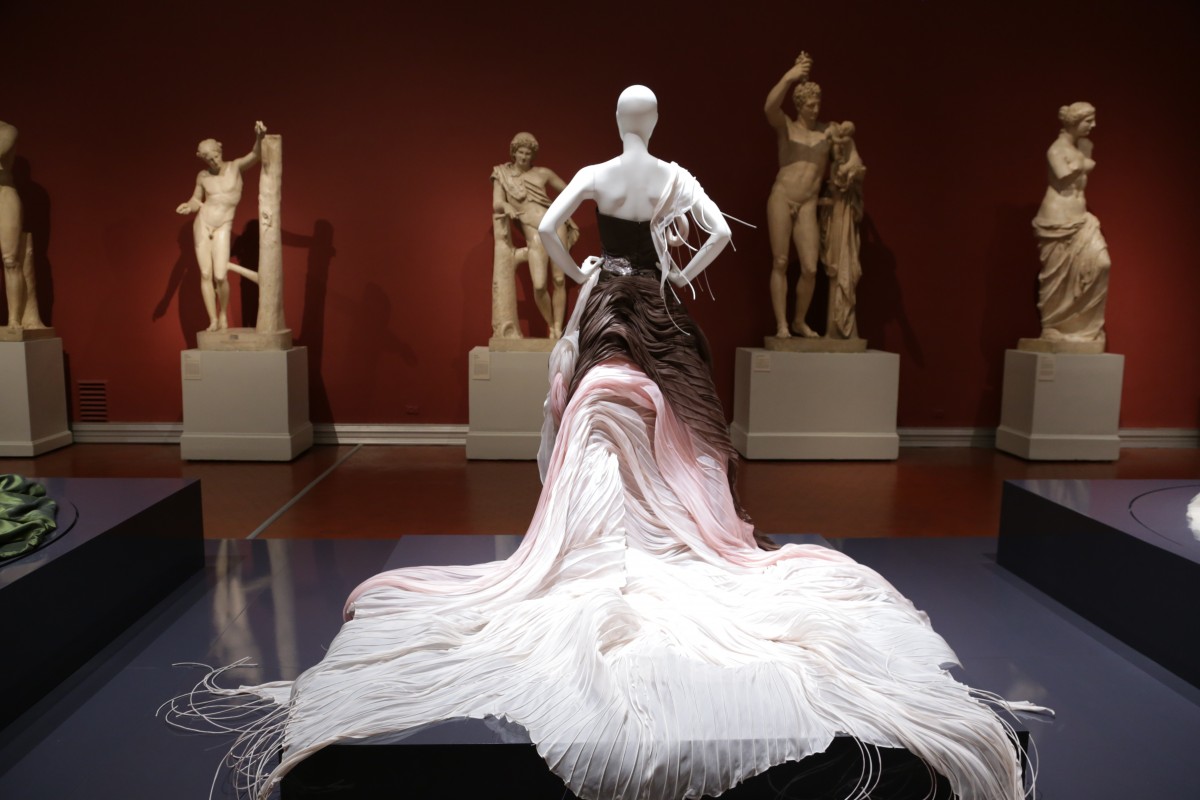Anna Wintour once said that one of the things she adored most about the fashion industry is its constant drive to evolve and its focus on the future. Karl Lagerfeld mused that fashion is a mirror of the zeitgeist and that nothing is more unsettled than the zeitgeist. Looking at the developments in the world of luxury fashion it sure seems to have changed a lot – a new focus on ethical consumerism has led to the invention of new materials such as vegan leathers, a growing second-hand market makes status symbols like a Hermès bag more readily available than ever and renting concepts like ‘Rent the runway’ make clothes as exchangeable as library books. On the other hand, some aspects that make high quality high price fashion so luxurious have remained surprisingly continuous. With all the developments that make luxury fashion more accessible and by necessity also less exclusive, it was only a matter of time until stars and actors had come up with a new and even more exclusive way to dress: vintage designer fashion. A general trend towards personalisation and customisation is also visible. Last year Louis Vuitton released a collection of colourful patches you could choose from to create a unique one-of-a-kind bag or purse.
With the idea of ethical consumerism consumers now want fashion that does not just fit their personal aesthetic but also expresses their personal moral code. Stella McCartney’s designs for example do not use any animal products. She uses recycled polyester instead of calf leather and is supporting research into cruelty free silk thread created through replicating the way in which spiders spin their silky nets. Earlier this year the world’s first vegan fashion week was organised in Los Angeles.
Owning a piece of high end fashion is always a status symbol and the industry has often used limited edition colourways and long waiting times to create a feeling of exclusivity. Even if you had the $10,000 that could buy you a Hermès Birkin bag, your name would only be put down on a waiting list. Second stores and resale websites for designer brands have made it much easier to access status symbols like the Birkin, even if you aren’t Victoria Beckham or one of the Kardashians. Another way in which more people can participate in the world of luxury fashion is renting. Different services offer different renting systems. A subscription style like ‘Rent the runway’ will let you adopt a piece for up to a month before you have to send it back. Others offer special occasion items, namely ball gowns, to borrow for a few days. And in many ways this concept makes a lot of sense. Ballgowns are among the dresses that rarely get worn twice. They take up a lot of space in your wardrobe and you don’t have the deal with the dry-cleaning . So there are many good reasons to outsource all these problems to a professional.
Still, what is defined as luxury fashion is constantly changing and for every development that makes high quality and high end clothing available more widely, there is a shift to create a new unreachable standard only possible for very few people. The luxury dresses of choice for red carpet events have lately been surprisingly often vintage. Do you remember Cardi B’s vintage Thierry Mugler gown from the 2019 Grammy’s? Or Kim Kardashian showing up in a skin-tight sheer 90s Paul Gaultier look earlier last month? When it comes to vintage fashion it is not just the price that makes it so exclusive. Pieces like these are difficult to find and you will either need a lot of time spent looking through charity shops, eBay listings and estate sales or have very good personal relations to a vintage dealer to get them.
While many changes in the industry have allowed more people than ever before to participate in the circus that is high end designer fashion, stylists and celebrities also keep finding new ways to ensure extreme exclusivity – mainly vintage and customisation. To be able to own or even just wear a dress like that you have to know the right people.
But this personal connection that makes clothing so luxurious is not exclusive to high end designer pieces. While my own wardrobe does not sport any fancy designer pieces, there are a few things in there that to me embody true luxury. My favourite is a bright red evening dress. It is not only ethically produced by a woman I know and adore but also made exactly to my measurements. Because it is made from ethically sourced fabric I know that only five were ever sold. It fulfils all the requirements I could ask for in a glamorous dress: it is unique and rare, fits my ethical standards as well as my body and I feel emotionally connected to not only the piece itself but also the people who created it. It shows: the things that make the high end dresses described above so special and luxurious are not all related to a high price tag.



